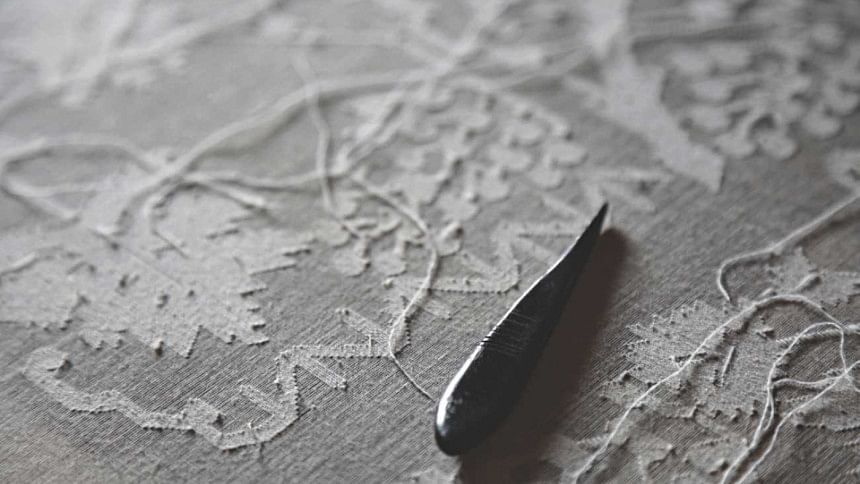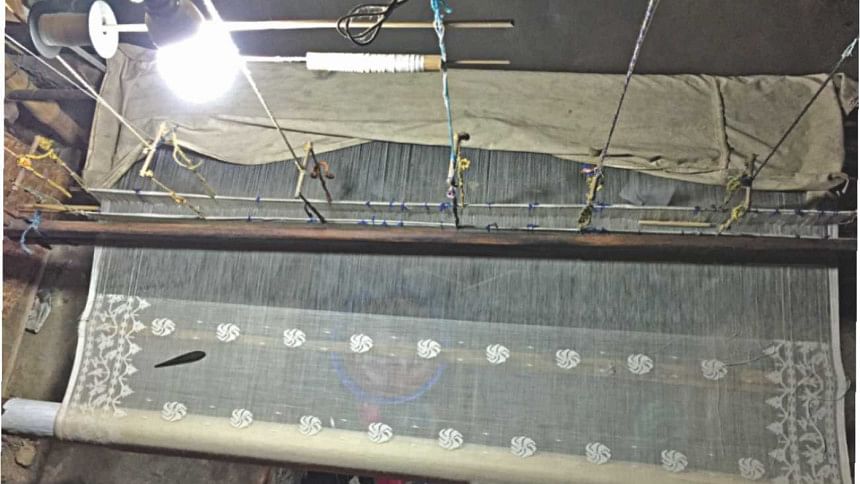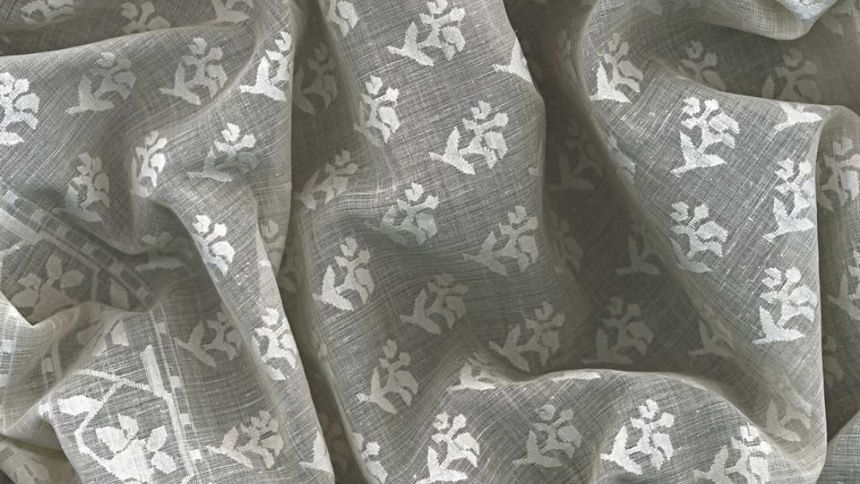Reviving Muslin

Saiful Islam, CEO, Bengal Muslin (an initiative of Drik), thinks that it is indeed possible, though it would require significant effort. When a London-based group did a research project on Muslin and asked Drik whether it would be interested in taking it forward, Saiful Islam took the challenge. "The initial study lacked detailed knowledge and the role of Bangladesh regarding Muslin," he points outs. "There was a lot we could add - from the craftsmanship of the weavers to the specific climate which made the making of the fabric possible."
And that was the start. They read everything old and new that had been written on the subject. Rare documents were studied, hidden archives unearthed and innumerable museums visited in different countries to actually see the fabric. And they also saw a specimen of the extinct cotton plant out of which the yarn was produced.
If only could they bring the plant back to life! Well, can they?

PROJECT PLANTATION
Gossypium Arboreum is a cotton-plant native to the Indian sub-continent. One of its many varieties was called Neglecta (known in Bengali as Phuti Karpas), which produced the unique Muslin cotton. This particular variety has been extinct for over a hundred years now.
"We carried out an extensive investigation and tried to identify plants which are very similar to Neglecta," Saif explained.
The organisation has taken up a number of plantation projects. Be it working on a project with Cotton Development Board or working independently, Bengal Muslin is determined to identify the most suitable plant. These have been planted near the river bank, replicating the ancient environmental conditions which supported the Phuti Karpas.
"We have entered into scientific collaborations with different organisations, including Kew Gardens which hold the original specimens, to identify the plant's genome profile. This will reveal the DNA of the fibre of our plants and those of the original and give us the necessary benchmark to carry out further research," Saif added.

COTTON-COUNT AS HIGH AS 500!
Generally speaking, a typical Jamdani sari in today's market has a cotton-count somewhere between 50 and 80. There are some which go up to a 100; about 120 is the peak. The cotton-count determines the fineness of the fabric. Muslin, which was renowned for its fineness, used to have very high cotton-counts, starting at 250 and upwards to reputedly 1000.
Therefore, in its mission to revive Muslin, the organisation was determined to make a fabric of high cotton-count. "When you want to go beyond 200, it's unknown territory," Saif said.
Bengal Muslin had pushed to 300. "It was an extremely difficult task, demanding an immense amount of patience from the weavers' part, and a lot of experimentation," Saif said.
Changes were brought in the equipment and the handloom itself in order to make them more capable of working with such fine threads. Meanwhile, environmental conditions of those times had to be replicated. In order to weave Muslin, you needed the right humidity, temperature, etc. "We had to install humidity metres and temperature metres and what not," he further said.
And they had been successful in producing 300 cotton-count. The next target was to reach 400! This meant that they had to go through the whole process of experimentation once again. And finally they managed that as well.
"Before we try to reach 500, we would work on making some more fabrics of 400 count," Saif informed.
BUILDING THE MUSLIN BRAND
Other than scientific research, Bengal Muslin runs a myriad range of awareness campaigns in order to raise interest about this uniquely priceless heritage of Bangladesh, amongst people from all walks of life. For example, it ran Muslin Festival (from 5 February to 5 March, 2016), which involved a month-long exhibition of Muslin, fashion shows, seminar with stakeholders from our country and abroad, etc. The event was hosted by Drik in collaboration with Aarong and Bangladesh National Museum. Bengal Muslin also published a book, a graphic novel and are soon going to release a documentary film.
"When we were doing research about Muslin, we realised that we had a very strong and unheard story to tell," Saif said. And these stories, told from a wide plethora of platforms and through different mediums, are collectively building awareness amongst people from all walks of life, bringing recognition to our weavers and pride to our nation.
By M H Haider
Photo courtesy: Drik

 For all latest news, follow The Daily Star's Google News channel.
For all latest news, follow The Daily Star's Google News channel. 



Comments